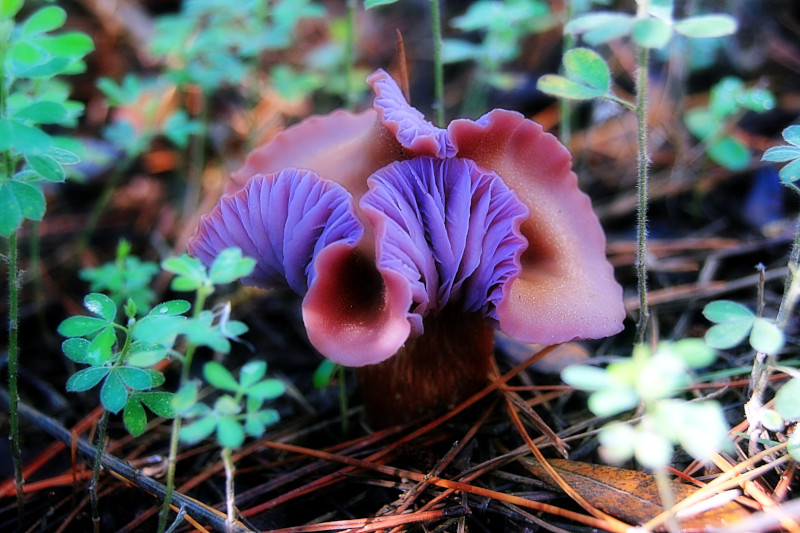Amethyst Deceiver Facts
- The picturesque and descriptive term of Amethyst Deceiver serves as the generally accepted common name for a remarkable variety of mushroom. Its scientific name, however, remains the difficult to pronounce Laccaria amethystina.
- By either of these names, though, it’s a fungus with what some people humorously consider to be a psychological problem. That would be a confusing personality. That’s due to the fact that this marvel of Nature actually changes its color as it ages.
- As a result of this trait, it can sometimes be difficult to identify. This also serves as the source of the common name. The first scientific description of it occurred in 1778, as a result of the work of the respected English botanist William Hudson.
- Although it does appear in the Catalogue of Life, the IUCN currently has no listing for the Amethyst Deceiver. The fungus nonetheless faces several threats to its existence. Its greatest threat, though, likely comes in the form of climate change.
Related Articles
Amethyst Deceiver Physical Description
While this remarkable species understandably impresses many people, the Amethyst Deceiver does not do so due to physical size. Regardless of its many other wonderful qualities, this wonder of evolution only ranks as an average-sized form of mushroom.
Its stem, which develops as quite fibrous, as well as hollow, generally attains a maximum height of about 2.76 in (7 cm). The cap of the fungus, meanwhile, typically grows to around 2.25 in (6 cm) in diameter, and boats a small depression in the center.
Overall, the Amethyst Deceiver begins its life with a comparatively concave structure. This, however, flattens out with age. In color, the stem usually displays a lighter shade, closer to lilac. The cap, though, displays the famous purple, but it lightens as it ages.
The great majority of individual specimens also display a fascinating pattern of striations. These most commonly appear along the edges of the cap, and display an even paler shade. Its interior flesh possesses neither a discernible scent or color.
- Kingdom: Fungi
- Phylum: Basidiomycota
- Class: Agaricomycetes
- Order: Agaricales
- Family: Hydnangiaceae
- Genus: Laccaria
- Species: L. amethystina
Amethyst Deceiver Distribution, Habitat, and Ecology
Quite fortunately, the Amethyst Deceiver evolved as native to a surprisingly wide swathe of the world. In point of fact, it appears in specific regions of Asia, Europe, North America, and South America. The majority of populations appear in northern regions, though.
It also shows a remarkable versatility in terms of its habitat type. That’s due to the fact that it appears in both deciduous and coniferous forests. The species, does, though, display a pronounced preference for temperate zones within this same geographical range.
Even more amazingly, a minor mystery presently exists regarding its most common choice of habitat. For reasons that still mystify researchers, most specimens appear in the immediate vicinity of certain types of trees. These consist of both beech and oak trees.
As with all mushrooms, the Amethyst Deceiver reproduces via spores. In its case, though, these develop as relatively large in size. It remains undetermined if this fact accounts for its tendency to appear only singly or in small groupings in any one location.
Though not commonly consumed, since most consider its flesh tasteless, it nonetheless remains edible, but only technically. This confusing state exists due to a surprising fact. Most often, individual specimens actually qualify as relatively toxic in nature.
Its own genetic structure contains no known toxic compounds. However, it also remains extremely sensitive to any naturally occurring arsenic in the soil in which it appears. When this is present, the mushroom absorbs it into its flesh, rendering it toxic as well.
Species Sharing Its Range
Check out our other articles on 7 Rare and Unusual Birds, Luna Moth, Ol Doinyo Lengai, Maui Dolphin, Coral Pink Sand Dune Beetle, Mount Ranier Lousewort, American Alligator

